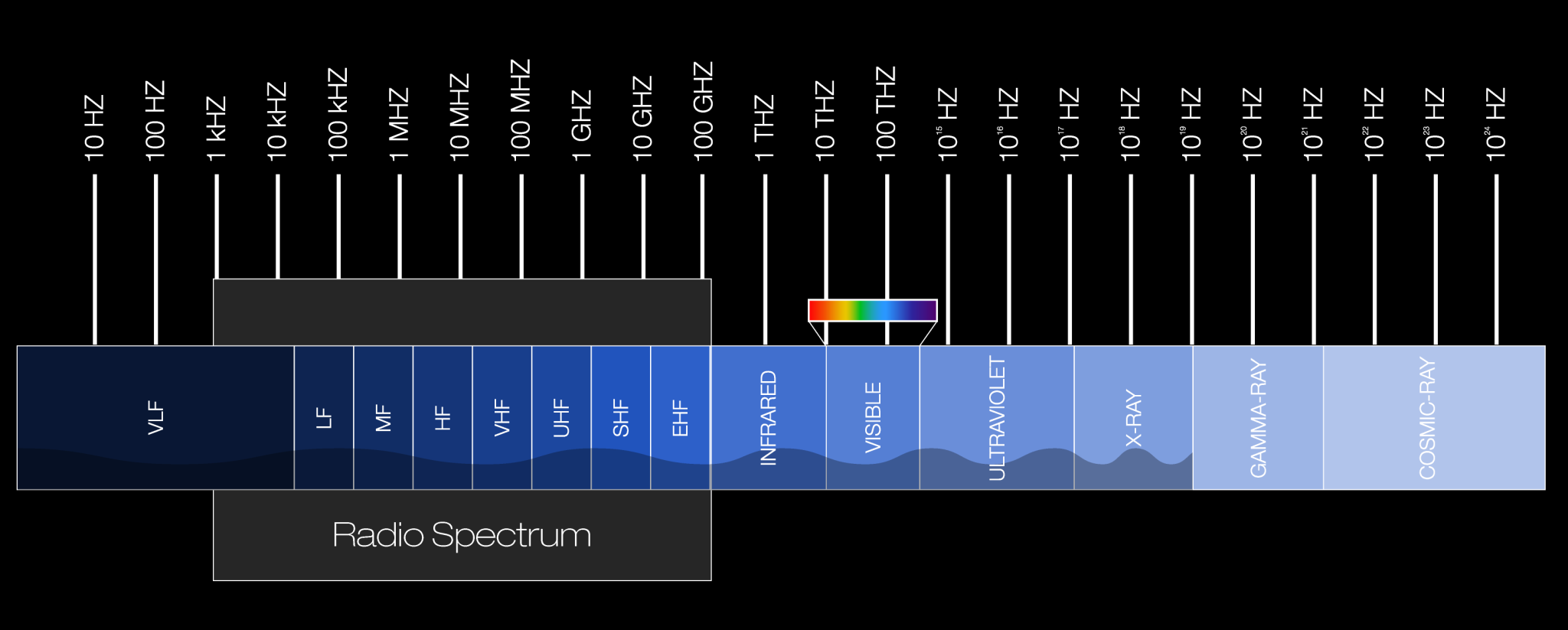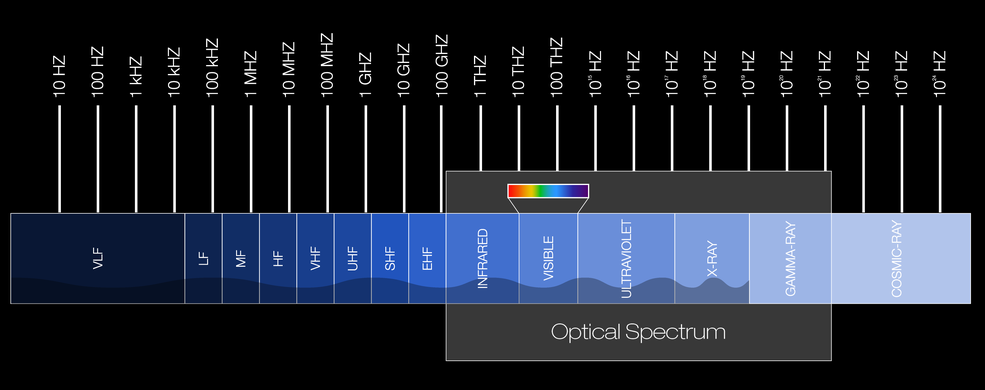Radio Spectrum
The basic building block of radio communications is a radio wave. Radio waves have the longest wavelengths in the electromagnetic spectrum. Like waves on a pond, a radio wave is a series of repeating peaks and valleys. The entire pattern of a wave, before it repeats itself, is called a cycle. The wavelength is the distance a wave takes to complete one cycle. The number of cycles, or times that a wave repeats in a second, is called frequency. Frequency is measured in the unit hertz (Hz), referring to a number of cycles per second. One thousand hertz is referred to as a kilohertz (kHz), 1 million hertz as a megahertz (MHz), and 1 billion hertz as a gigahertz (GHz). The range of the radio spectrum is considered to be 3 kilohertz up to 3,000 gigahertz.
A radio wave is generated by a transmitter and then detected by a receiver. An antenna allows a radio transmitter to send energy into space and a receiver to pick up energy from space. Transmitters and receivers are typically designed to operate over a limited range of frequencies.
Optical Spectrum
Optical communications use light as a means of transmitting information over long distances. Within the context of NASA, optical communications technology sends data across space using lasers instead of radio frequencies.
Space Communications and Navigation (SCaN) will use optical transceivers both on the ground and in space to send and receive information. The transceivers will be able to utilize many of the composite portions of the optical spectrum through the implementation of signal modulation. Currently, optical spectrum is not regulated, however SCaN collaborates with international working groups.




























